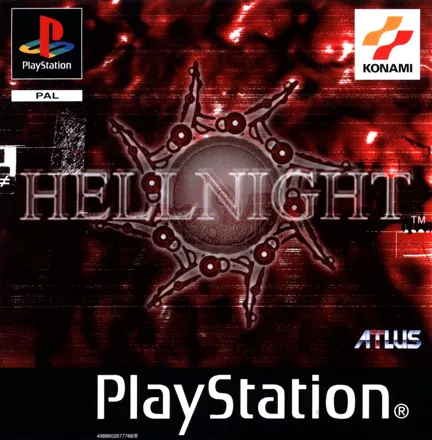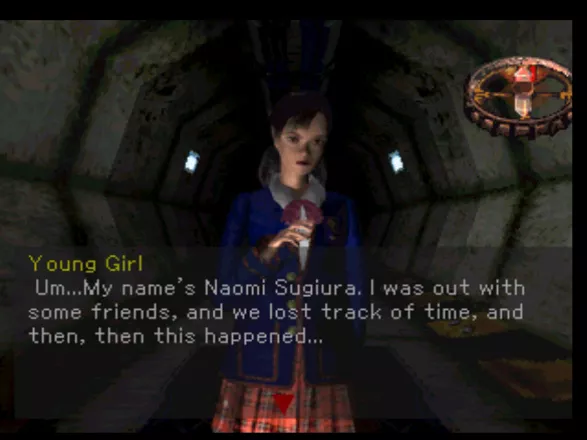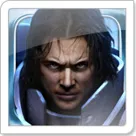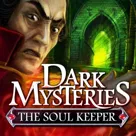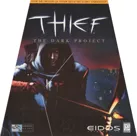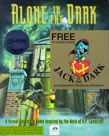Hellnight
Description
The future Tokyo is a megapolis built on top of a huge system of underground tunnels and sewers. A rumor is heard that in this underground world hide the followers of a mysterious cult, known as the Dark Messiah. At the same time a symbiotic life form escapes from scientists and makes it's way into the sewer system. There it causes the crash of a subway train and starts devouring the passengers on board. A lone hero, along with a schoolgirl Naomi Sugiura are the only survivors of the crash.... and must flee from the creature in order to survive.
Hellnight is a survival horror game at heart, although it has no combat gameplay. Controlling the nameless hero, the player must travel through the underground and protect Naomi. There is only one monster in the whole game, the "creature" itself, which is invulnerable and cannot be killed. Instead players are constantly on the run from it, making sure it does not catch them. The game is divided into large maze-like levels, each one usually populated by the creature who keeps pursuing the player (although he does change form after each level). At certain points there will be companions who can attack the monster and temporarily stun him. There are also people to talk to in the underground world, items to pick up, and puzzles to solve.
Spellings
- ダークメサイア - Japanese Spelling
Groups +
Screenshots
Credits (PlayStation version)
45 People (39 developers, 6 thanks) · View all
| Naomi Sugiura (杉浦奈緒美) |
|
| Kyōji Kamiya (神谷京二) |
|
| Leroy Ivanov (リロイ・イワノフ) |
|
| Rene Lauren (ルネ・ロレイン) |
|
| Ratso (ラッツォ) |
|
| "Sacred Ring" Priest (「聖なる輪」司祭) |
|
| "Sacred Ring" Believer ((「聖なる輪」信者) |
|
| Researcher (研究所所員) |
|
| Planning (企画) |
|
| Program (プログラム) |
|
| Graphics (グラフィック) |
|
| [ full credits ] | |
Reviews
Critics
Average score: 46% (based on 5 ratings)
Players
Average score: 3.9 out of 5 (based on 7 ratings with 1 reviews)
"The only thing you can do is to run and keep running"
The Good
In the last few years (mostly 2012) horror games have seen a resurgence in the indie scene, with titles like Amnesia: The Dark Descent and Slender being popular material for various Let’s Play videos on Youtube and in turn, encouraging more and more indie developers to crank out horror games. However, while the mainstream industry has turned horror more and more towards action, the indie (synonymous with PC) scene games have been characterised by the vulnerability of the main character by emphasizing on the absence of weapons. To my knowledge the first horror game to focus on running away and evading enemies instead of direct confrontation is Japanese Clock Tower: The First Fear on SNES. However, that game was in 2D and employed a side-perspective. Now enter Dark Messiah (or the European title, Hellnight) which is not quite far apart from many of the hit indie horror games so popular, having you avoid and flee from an enemy in first person perspective. This marks it the first horror game to do that. However, Dark Messiah has quite a few other tricks up its sleeve.
The premise of the game is rather straightforward. As the main character is running away from a group of cult members on the street, he happens to board a subway train. At the same time, a humanoid monster happens to escape from scientists and encounter the same train, causing a big ruckus and crashing the train in process. The main hero and a girl named Naomi happen to be the only survivors and with the monster hot on their tails, decide to seek shelter in the local sewer system. However, soon they realize that they might not have lost the creature after all..
I’m a passionate fan of horror fiction in every form, but in my opinion video games are by far the most suitable medium for macabre mysteries. As a player, there is a real sense of you guiding the narrative forward, slowly uncovering the details of whatever a particular dark tale has to hide. One could argue that most horror games don’t take advantage of that, but if there’s anything Dark Messiah excels in, it is the story-telling. Besides the obvious premise, the game tells you nothing of what to expect further down the road. The only way to make sense of what’s happening is to piece together different tidbits that you gather, mostly by talking to various inhabitants of the Mesh (the underground system that you spend most of your time in). Many of the people you encounter do nothing but befuddle you further, and at best, offer only cryptic information. Not until the final sections of the game that you finally start to understand the greater picture, and even then there’s quite a few snippets of valuable info that you have to look into yourself.
Besides the fact that after escaping from the sewers the main hero and his companion find themselves in an underground system built by the Japanese military in pre-WWII era which is inhabited by all sorts of dubious people, and the fact that you have a ferocious monster following you everywhere, it is very difficult for me to really explain why the story of the game is simply superb. Yes, it’s not exactly Nobel-prize material, has a certain B-movie quality, and at closer scrutiny the influence(s) becomes quite obvious, but as an EXPERIENCE, it is terrifyingly fascinating. Since there is such a strong sense of mystery in the game, I’d rather not give away too much, but rather continue with what exactly holds this fantastic trip together. The game itself is decidedly spartan, almost to the point of inelegance. Besides traversing the underground mazes in a first-person fashion, there is no interactivity. You can enter various rooms and places, but generally whenever you can look or use something, the area itself is not fully navigable in 3D but a still image with hotspots here and there. Even your companion is not visible, but exists „inside“ the main character, and the only way you can see your companion is to press the Square button to bring up a static image of her with a text box underneath. Yes, this game is not ashamed of its low-budget quality at all.
But despite these limitations, the gameplay is still captivating and furthermore, as a horror game, delivering the terror. With nothing to use against the monster, the only way to survive is to evade and run. If the monster catches the hero, it is an instant death...or almost. With a companion alongside you, he or she will always be the first one to die and acts as an extra life for the main hero. That being said, you do want your companion alive at all times. While you start out with Naomi, the girl from the subway, there are 4 other potential „friends“ you can have, albeit not at the same time. These companions are scattered throughout the game, guaranteeing that you always have someone next to you. They all have different abilities, with Naomi being arguably the most useful – she can sense the monster, making it visible on your automap. This not only allows you to decide on how to maneuver, it helps to decrease the nerve-wrecking level of tension you might otherwise have.
The tension is there regardless of her useful skill, because the game has minimalistic, yet fantastic audio design. The ambiance is limited to a short loops of sounds occuring from time to time, unlike Silent Hill games which feature a full-blown dark ambiance at all times. But most importantly, with or without the girl, the only way to sense the monster’s presence is through the unique noises he makes, in turn either making you hurry for the automap button or, in the absence of Naomi, sweat in agony as you’re trying to figure from which direction he’s going to strike.
The reason for this is that in addition to the limited graphical variety, Dark Messiah has a small draw distance. This works in the game’s favour. There is nothing more ghastly than walking slowly in the passageway and noticing something appearing from the shadows. Be it a monster dashing towards you or an object part of the scenery, it manages to pull a quick shiver on the player’s part. Also, even with the game being low-budget and game design simple, the textures of the walls add to the overall atmosphere, from the mechanical, rusty aesthetics of the industrial underground complex to... well, can’t tell too much, can I?
There is also a small replayability value to the game. The game sports 6 different endings, depending on which companion you finish the game with. The choice of companion also leads to a few other gameplay differences in addition to more background exposition on the character itself. While I finished the game with Naomi, I’ve read that with another character, the end-game is quite different.
The Bad
Despite loving the game immensely, there is a reason this game remains very obscure (in addition to seeing an English localization only in PAL territories): it is very low budget. Technologically speaking, it’s on the level of Kileak: The Blood, an early 1995 dungeon crawler-shooter game for PlayStation. The CGI is awkward and this is carried to background and character stills, which are pre-rendered CG images. While I think it adds to the overall style and atmosphere of the game immensely, more picky players probably won’t appreciate it as much.
The only thing that frustrated me a bit was the saving system. Now, horror games of that time are known for being especially cruel with saving your game and while often it is executed in a way that complements the overall design, I feel that Dark Messiah takes it to an extreme. The only time you can save is when you exit and enter a new area. While this is not too much of a problem in the beginning, the end-game has some very long sections where it is very easy to die and lose a lot of progress in the process. Other than that, I can’t find a fault in the game.
The Bottom Line
If it hasn’t been clear already, Dark Messiah is a highly atmospheric and interesting horror title which pioneered the protagonist’s ability to not fight back at all in first-person perspective. In many ways, it is a product of its time: created by a small team of developers yet not really indie, technical limitations adding to the atmosphere and its relative obscurity (I’m not exactly sure of the status of the game in Japan, but judging from the lack of info and high prices, it probably enjoyed a limited audience; not to mention the PAL territories) making everything about it even more fascinating. As long as one is not taken aback by mentioned limitations and is willing to take a chance, Dark Messiah should be a treat to horror fans everywhere (as well as people who are interested in highly atmospheric games).
PlayStation · by Donatello (466) · 2013
Analytics
Upgrade to MobyPro to view research rankings!
Related Sites +
-
Wikipedia: Hellnight
Information about Hellnight at Wikipedia
Identifiers +
Contribute
Are you familiar with this game? Help document and preserve this entry in video game history! If your contribution is approved, you will earn points and be credited as a contributor.
Contributors to this Entry
Game added by Unicorn Lynx.
Additional contributors: Dae, DreinIX.
Game added October 26, 2004. Last modified March 2, 2023.
